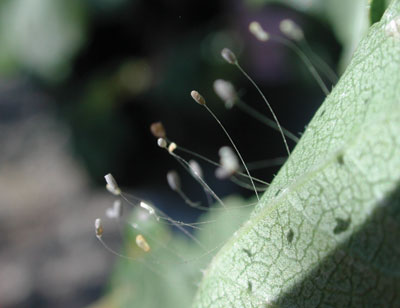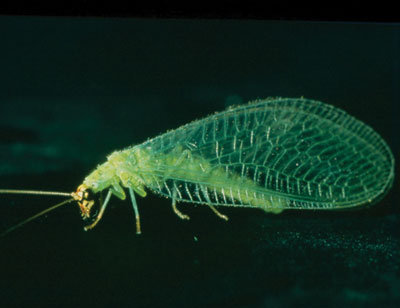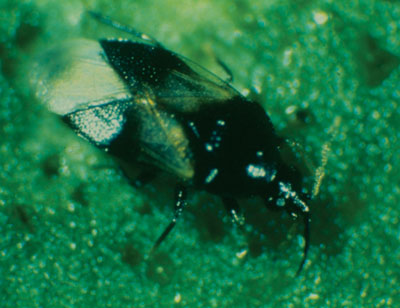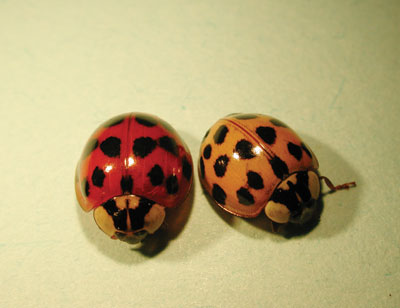Updated – May 27, 2020
There are several species of aphids that are grouped together as “cereal aphids”. The most common are bird cherry oat aphids (Figure 1) and corn leaf aphids (Figure 2), though English grain aphid and greenbugs can sometimes be found. The aphids would have been present since the fall and usually are more prevalent in early planted fields as those plants would have emerged when the adults were flying around looking to find a nice home for their offspring for the winter. The aphids usually hang out at the base of the plant, either within the whorl or even underground at the base if night temperatures are quite cool. Once temperatures increase and the crop grows taller, they can be found on the stem and leaves of the plant. Some predators do take action and help keep aphids populations below threshold. When scouting you may see the odd ladybug which does tell you that there is something there for them to feed on.

On-farm trials done in Ontario have not found an economic benefit to spraying aphids, though if populations reach an average of 12-15 aphids per stem prior to heading, an insecticide application may be required, though again, this is a rare event in Ontario. Make sure to scout throughout the field when determining the average, since aphids can start in patches and population levels can be overestimated if scouting is only done in these patches. After heading, the threshold is 50 aphids per head. Cygon 480 and Transform WG are registered for aphids in cereals. Pre-harvest for Cygon 480 is 35 days to harvest (so be careful!) and Transform WG PHI is 14 days. More information can be found in the Cereals Chapter of Field Crop Protection Guide, Publication 812.
Beneficial insects do a relatively good job of controlling aphid populations so consideration should be given to how the beneficial insects are dealing with the aphids before applying an insecticide since the registered insecticides will harm the beneficial insects as well. If the numbers are at threshold however, an insecticide treatment may be advisable. A new app is available to help you make a spray decision. Similar to the Aphid Advisor app for soybean aphids, the free Cereal Aphid Manager app developed by AAFC helps to determine if the number of beneficial insects you have will do the control for you, or whether there are too few and an insecticide application is required. The app is available both at Google Play and the Apple Store.
The main concern with cereal aphids is that they vector barley yellow dwarf, especially if volunteer wheat was present in the field in the fall when the aphids arrived. They can pick up the virus from unhealthy plants and vector it into the healthy crop. Applying an insecticide will not reduce the incidence of barely yellow dwarf.
For more information, refer to the Agronomy Guide for Field Crops, OMAFRA Publication 811 at: http://www.omafra.gov.on.ca/english/crops/pub811/p811toc6.htm
Beneficial insects that feed on aphids






Photo Credits: publication 310, Integrated Pest Management for Apples

